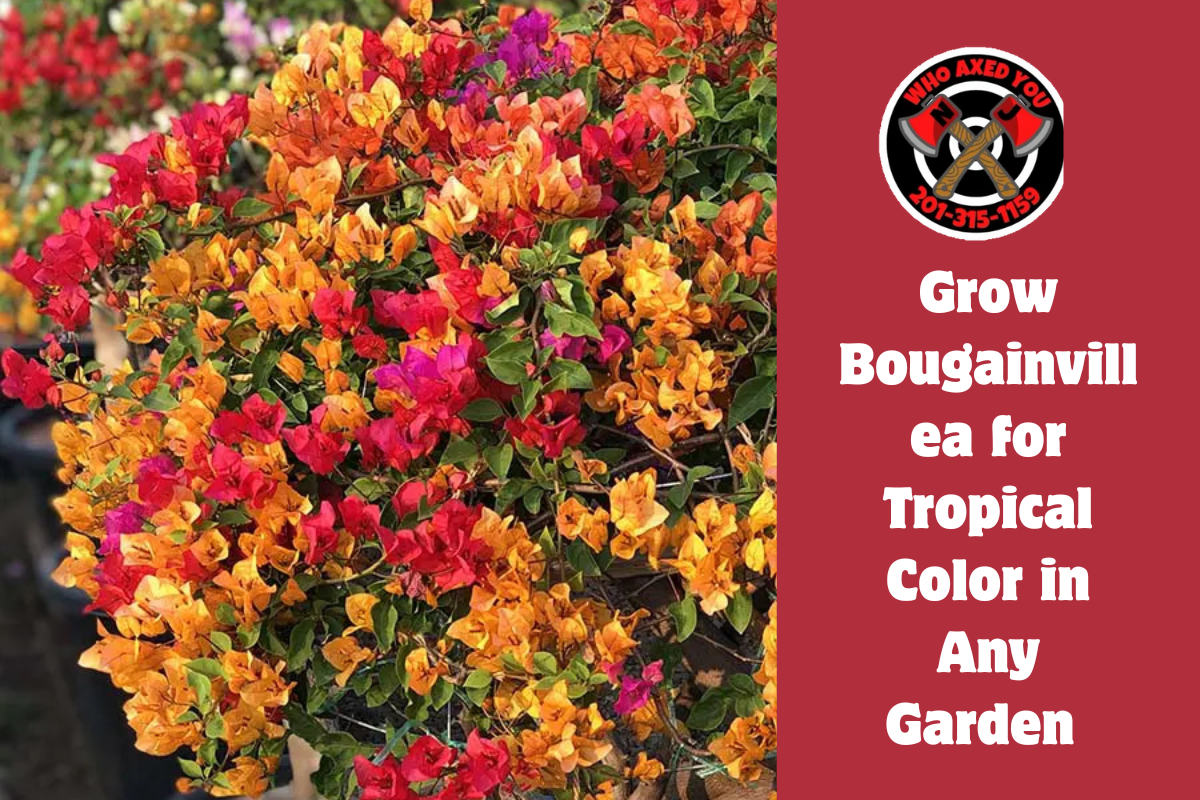Grow Bougainvillea for Tropical Color in Any Garden :- Bougainvillea, with its vivid colors and hardy nature, is an excellent addition to any tropical garden because of its color and resilience. This adaptable plant thrives in warm areas and may be planted in a variety of forms to beautify outdoor spaces with its gorgeous colors. Its origins can be traced back to South America.
Grow Bougainvillea for Tropical Color in Any Garden
Because of its vibrant colors and tough nature, bougainvillea is a fantastic addition to any tropical garden. Its beauty and endurance make it an excellent choice for any tropical garden. Because of its adaptability, this plant thrives in warm environments and may be planted in a variety of forms to enhance the aesthetic appeal of outdoor places with its stunning hues.
Choosing the Right Variety:
Known for its robust growth and brilliant magenta bracts, Bougainvillea spectabilis is a plant that is commonly used. Bougainvillea glabra is characterized by its smaller and more compact growth, as well as its multicolored appearance, which includes pink, red, and purple. Bougainvillea hybrid variants: These hybrid types offer a wide range of colors and growth patterns, ranging from dwarf forms that are perfect for containers to larger climbers that are suitable for fences and arbors respectively.
ALSO SEE : How to Create an Ideal Hummingbird Habitat
Ideal Growing Conditions:
It is essential for bougainvillea to receive a minimum of six to eight hours of direct sunlight on a daily basis in order to achieve the best possible development and blooming. It is tolerant of a wide range of soil types, provided that they are not completely saturated with water, and it favors soil that drains well. You should supplement the soil with organic matter in areas where the soil is clay-based or compacted in order to increase drainage and fertility.
Planting Bougainvillea:
Bougainvillea should be planted in the spring, after the last frost, when temperatures are consistently over 60 degrees Fahrenheit (15 degrees Celsius).
The distance between plants should be between three and five feet, depending on the mature size of the variety. Size of the Planting: Make sure to dig a hole that is twice as big as the root ball.
After placing the plant in the hole, backfill it with soil, making sure that the top of the root ball of the plant is level with the surface of the soil.
Providing support for climbing kinds can be accomplished through the use of trellises, fences, or arbors. Motivate immature plants to grow in a climbing manner by training them.
Watering and Fertilizing:
To begin, water the plant well so that it can form its roots. Once it has established itself, bougainvillea is able to withstand drought, but it does benefit from receiving periodic heavy soaking during periods of drought. Avoid overwatering your plants because doing so can cause root rot. Utilize a fertilizer that is either well-balanced or specifically designed for plants that are in bloom.
In order to stimulate flowering, use the fertilizer every four to six weeks during the growing season (spring to fall). In the winter, when growth is slower, fertilizing should be reduced.
Pruning and Maintenance:
The Bougainvillea plant blooms on new growth, thus it is important to prune it after each blooming cycle in order to keep its shape and encourage the creation of new flowers. For the purpose of reshaping overgrown or stray branches, sharp pruning shears should be utilized. Bougainvillea is generally resistant to pests and diseases; nevertheless, it may occasionally be affected by aphids, caterpillars, or fungal infections.
Container Gardening:
When selecting a container, it is important to choose a large container that has drainage holes so that it can fit the root system of the plant. Utilize a potting mix that has good drainage. Take care: It is necessary to water and fertilize bougainvillea plants that are planted in containers more frequently than plants that are cultivated in the ground. Pruning should be done on a regular basis to maintain size and shape.
